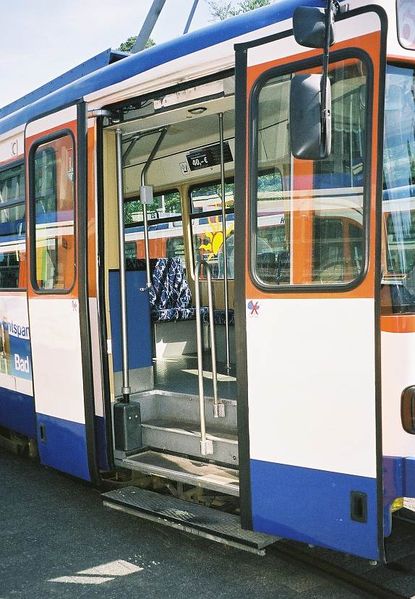A low-floor tram is a tram that has no stairsteps between one or more entrances and part or all of the passenger cabin. The low-floor design improves the accessibility of the tram for the public, and also may provide larger windows and more airspace.
Two low floor trams, an Alstom Citadis 302 and Bombardier Flexity Classic, in Adelaide, South Australia
Entry door of a low-floor tram, with "roll-in" level floor accessibility.
Entry door of a high-floor tram. Stair steps are visible just inside the door.
Wheelchair access ramp in Protram 205 WrAs tram. Low floor is approximately 360 mm (14 in) high
High-floor describes the interior flooring of commuter vehicles primarily used in public transport such as trains, light rail cars and other rail vehicles, along with buses and trolleybuses. Interior floor height is generally measured above the street surface or above the top of the rail. High-floor designs usually result from packaging requirements: mechanical items such as axles, motors, crankshafts, and/or transmissions, or luggage storage spaces are traditionally placed under the interior floor of these vehicles. The term is used in contrast with low-floor designs, which offer a decreased floor and entry height above the street surface. Since low-floor designs generally were developed after high-floor vehicles, the older high-floor design is sometimes also known as conventional or the “traditional” design.
In this high-floor trolleybus, four steps must be negotiated during entry and exit.
High-floor coach, giving three steps for entry and exit.
High floor train in Russia
High floor train with ramp in Brisbane








